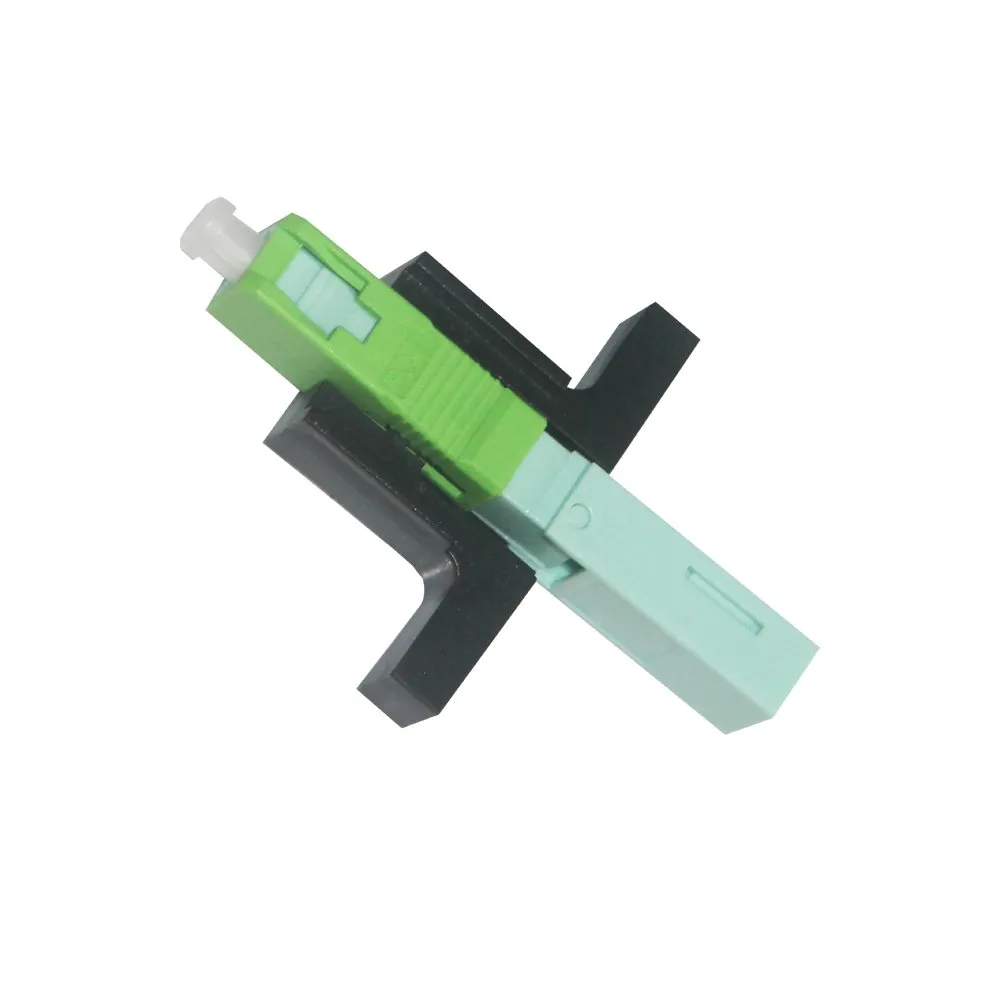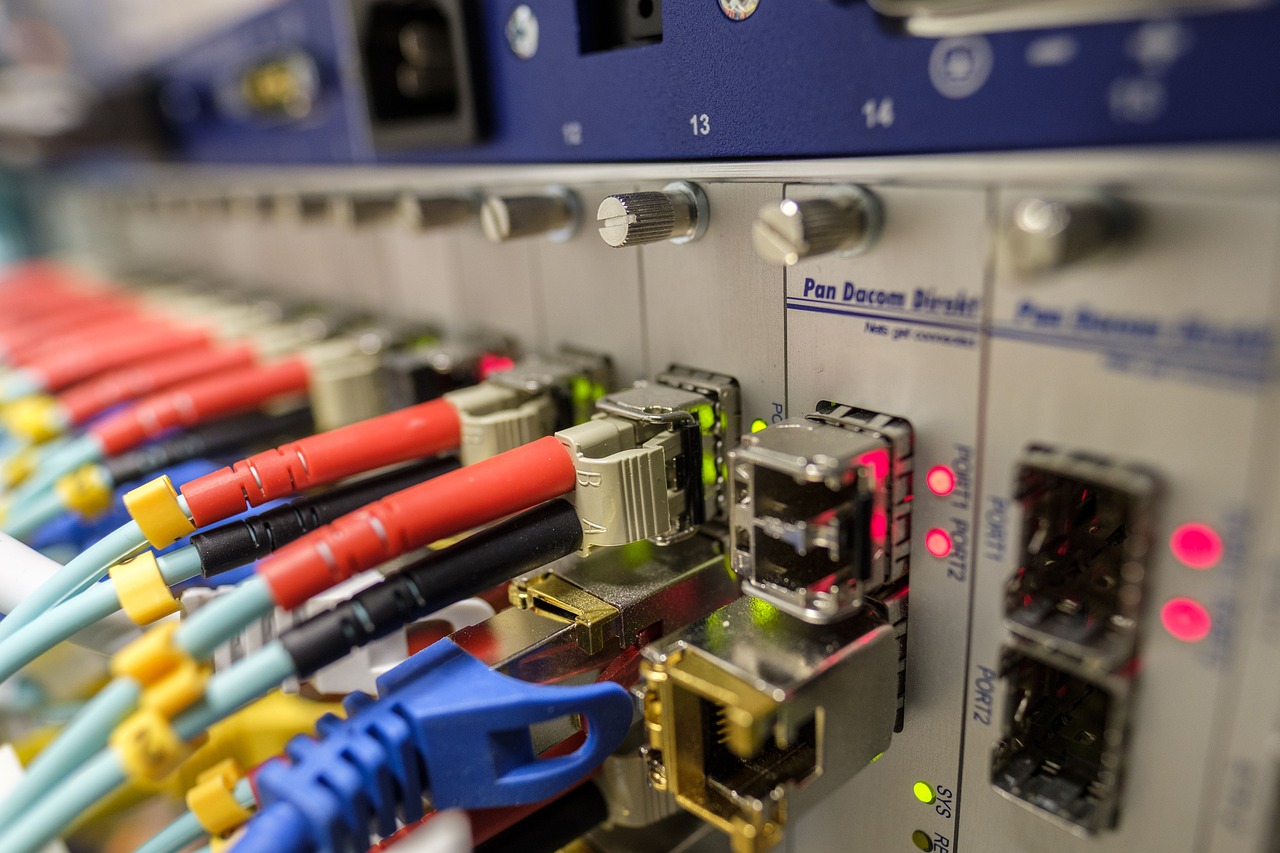Understanding the SC/APC Single-Mode Fiber Optic Connector for FTTH Applications

Introduction to SC/APC Single-Mode Fiber Optic Connectors
In the world of fiber optic networks, the SC/APC Fiber Optic Connector plays a crucial role in ensuring seamless connectivity and optimal performance. This section will delve into the basic design, features, and significance of the SC/APC connector, as well as its differentiation from other connectors.
What is the SC/APC Fiber Optic Connector?
Basic Design and Features
The SC/APC Fiber Optic Connector is characterized by its square-shaped 2.5mm ferrule and a push-pull coupling mechanism. This design allows for easy and secure connections, making it a popular choice in various fiber optic applications.
Importance in Fiber Optic Networks
The SC/APC connector is widely recognized for its ability to minimize signal loss and ensure high-quality transmission in single-mode fiber systems. Its precise alignment and low return loss make it an essential component in maintaining signal integrity over long distances.
Differentiating SC/APC from Other Connectors
Color and Design Differences
One of the distinguishing features of the SC/APC connector is its distinctive green color, which sets it apart from other connectors such as LC or ST. This color coding facilitates quick identification during installation and maintenance procedures.
Performance Comparison
Compared to standard connectors, the SC/APC connector offers superior performance metrics, especially in terms of minimizing insertion loss and maximizing return loss. These attributes make it an ideal choice for demanding applications that require high precision and reliability.
The Role of SC/APC Connectors in FTTH
Fiber to the Home (FTTH) is a revolutionary technology that brings high-speed internet, television, and telephone services directly to residential buildings. This section will explore the definition and benefits of FTTH, as well as the unique contribution of SC/APC connectors to this cutting-edge connectivity solution.
FTTH Explained
Definition and Benefits
FTTH refers to the deployment of optical fiber cables from a central point directly to individual residences or buildings. This technology enables unparalleled internet speeds, superior signal quality for television, and crystal-clear voice communication. The benefits of FTTH include lightning-fast internet connections, enhanced reliability, and virtually unlimited bandwidth for data transmission.
Why Fiber Optics for Home Internet?
The use of fiber optics for home internet delivery offers several advantages over traditional copper-based systems. Fiber optic cables can transmit data at significantly higher speeds over longer distances without signal degradation. Additionally, they are immune to electromagnetic interference, ensuring consistent performance even in areas with high electrical noise.
SC/APC's Unique Contribution to FTTH
Minimizing Signal Loss
The SC/APC connector plays a pivotal role in minimizing signal loss within FTTH networks. Its precise alignment and low return loss characteristics ensure that the transmitted signals reach their intended destinations with minimal attenuation. This is particularly crucial in FTTH applications where maintaining signal integrity over extended distances is paramount.
Enhancing Internet Speed and Reliability
In the context of FTTH, SC/APC connectors contribute significantly to enhancing internet speed and reliability. By reducing insertion loss and maximizing return loss, these connectors enable seamless data transmission at ultra-fast speeds while maintaining the integrity of the transmitted signals. As a result, households connected via FTTH can enjoy consistently high-speed internet access without disruptions or latency issues.
Fiber optic cables can transmit data at significantly higher speeds over longer distances without signal degradation.
They are immune to electromagnetic interference.
Ensure consistent performance even in areas with high electrical noise.
Advantages of Using SC/APC Fiber Optic Connectors in FTTH
The deployment of SC/APC fiber optic connectors in Fiber to the Home (FTTH) networks offers a multitude of advantages, ranging from superior performance metrics to long-term reliability and durability.
Superior Performance Metrics
When it comes to performance, SC/APC connectors stand out for their exceptional attributes that contribute to the overall efficiency of FTTH networks.
Low Insertion Loss
One of the primary advantages of utilizing SC/APC connectors in FTTH applications is their low insertion loss. This characteristic ensures that minimal amounts of optical power are lost when the light signal passes through the connector. As a result, the transmitted data experiences minimal attenuation, leading to enhanced signal strength and integrity throughout the network.
High Return Loss
In addition to low insertion loss, SC/APC connectors also exhibit high return loss, which is crucial for maintaining signal quality within FTTH networks. The high return loss capability allows for efficient signal reflection back into the transmitting device, further optimizing the overall performance and reliability of the network.
Long-Term Reliability and Durability
Apart from their superior performance metrics, SC/APC connectors offer long-term reliability and durability, making them an ideal choice for FTTH installations even in demanding environmental conditions.
Resistance to Environmental Factors
SC/APC connectors are designed to withstand various environmental factors that could potentially compromise their functionality. Whether exposed to extreme temperatures, moisture, or mechanical stress, these connectors maintain their structural integrity and performance capabilities over time.
Maintenance and Longevity
Furthermore, SC/APC connectors require minimal maintenance once installed in FTTH networks. Their robust construction and resistance to wear ensure prolonged longevity without compromising on performance. This translates to reduced operational costs and enhanced operational efficiency for FTTH service providers.
The deployment of SC/APC fiber optic connectors in Fiber to the Home (FTTH) networks offers a multitude of advantages.
One of the primary advantages of utilizing SC/APC connectors in FTTH applications is their low insertion loss.
In addition to low insertion loss, SC/APC connectors also exhibit high return loss.
Apart from their superior performance metrics, SC/APC connectors offer long-term reliability and durability.
Furthermore, SC/APC connectors require minimal maintenance once installed in FTTH networks.
Understanding Factory Prices and Fast Connector Options
When it comes to navigating factory prices for SC/APC connectors, there are several important considerations that can impact the overall quality and cost-effectiveness of the connectors. Additionally, the appeal of fast connectors in FTTH installations presents a compelling choice for network deployment.
Navigating Factory Price for SC/APC Connectors
Cost vs. Quality
The decision-making process when considering factory prices for SC/APC connectors often revolves around finding the right balance between cost and quality. While it may be tempting to opt for the lowest-priced connectors, it's crucial to assess the quality standards offered by different manufacturers. Investing in high-quality SC/APC connectors ensures long-term reliability, minimal signal loss, and optimal performance within FTTH networks. Therefore, it's essential to prioritize quality over upfront cost to avoid potential issues and performance limitations down the line.
Bulk Purchase Considerations
For large-scale FTTH deployments or network expansion projects, bulk purchasing of SC/APC connectors can offer significant cost savings. Many manufacturers provide competitive pricing models for bulk orders, allowing service providers to acquire a substantial quantity of connectors at a reduced unit cost. However, it's imperative to conduct thorough quality assessments before committing to bulk purchases. Ensuring that the purchased connectors meet industry standards and performance requirements is paramount to guaranteeing seamless connectivity and long-term reliability within FTTH networks.
The Appeal of Fast Connectors in FTTH Installations
Definition and Benefits
Fast connectors have gained prominence in FTTH installations due to their efficiency and ease of use during fiber optic terminations. These connectors eliminate the need for time-consuming epoxy curing processes traditionally associated with connector terminations, significantly reducing installation time and labor costs. The swift termination process offered by fast connectors enhances operational efficiency during network deployment while maintaining high precision and reliability in fiber optic connections.
Choosing Between Standard and Fast Connectors
When evaluating connector options for FTTH installations, service providers often face the decision between standard and fast connectors. While standard connectors offer proven performance and reliability, fast connectors present an attractive alternative for accelerating installation timelines without compromising on connection quality. The choice between these options depends on specific project requirements, budget considerations, and the desired balance between installation speed and connector performance.
Conclusion
In summary, the SC/APC connectors play a pivotal role in ensuring high-speed internet, television, and telephone services are seamlessly delivered to residential buildings through Fiber to the Home (FTTH) networks. Their unique design and superior performance metrics make them an essential component in maintaining signal integrity over long distances.
Looking ahead, the future of fiber optics in home internet appears promising. As technology continues to advance, the demand for ultra-fast internet connections and reliable data transmission will only increase. This underscores the significance of leveraging advanced connectors such as SC/APC to meet the evolving needs of FTTH installations.
The ongoing development of fiber optic technologies is expected to further enhance the capabilities of SC/APC connectors, enabling even faster data transmission speeds and improved reliability. As a result, households connected via FTTH can look forward to enjoying unparalleled internet performance and seamless connectivity for their diverse digital needs.
See Also
Exploring SM G657.A2 Fiber with 2.0 x 5.0mm 1FO Mini SC FastConnect Field Connector
Addressing Fiber Interconnection Hurdles with 2.0×5.0mm SC UPC Single-Mode Field Assembly Connectors
Exploring Low Insertion Loss of 1*16 CH, SC/APC Single Fiber DWDM Mux Demux, ABS/LGX Module


